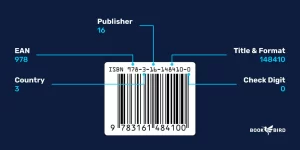Residential spray foam insulation delivers superior long-term value through its exceptional durability, energy savings, and maintenance-free performance that spans 30-50 years without degradation. While initial costs run 20-40% higher than traditional insulation materials, spray foam pays for itself within 5-8 years through reduced energy bills and continues generating savings for decades afterward.
The lifetime value advantage comes from spray foam’s unique combination of air sealing and insulation in a single application. Traditional insulation requires separate air barrier systems that often fail over time, leading to reduced performance and costly repairs. Spray foam maintains its R-value and air sealing properties throughout its service life, delivering consistent energy savings that compound annually. Homeowners typically save $300-1,200 per year on energy costs, creating total lifetime savings of $10,000-40,000 compared to conventional insulation systems.
 Energy Performance and Cost Savings Analysis
Energy Performance and Cost Savings Analysis
Spray foam insulation achieves R-values of 6-7 per inch for closed cell and 3.5-4 per inch for open cell, significantly outperforming traditional materials. This higher thermal resistance translates directly into lower heating and cooling costs throughout the building’s lifespan.
The air sealing properties create additional savings beyond the insulation value alone. Studies by the Building Performance Institute show that spray foam reduces air infiltration by 85-95% compared to fiber insulation systems. This air sealing eliminates energy losses that can account for 25-40% of total heating and cooling costs.
Energy audit data from the Home Performance Coalition indicates that homes with spray foam insulation consume 15-30% less energy than comparable homes with traditional insulation. These savings compound over time as energy costs increase, making the value proposition stronger each year.
Bonus Tip: Calculate your potential savings using local energy rates and current consumption patterns to determine accurate payback periods for your specific situation.
| Insulation Comparison | Spray Foam (Closed Cell) | Fiberglass Batts | Blown Cellulose | Rigid Foam Board |
| Initial Cost per sq ft | $1.50-$3.00 | $0.50-$1.00 | $0.75-$1.25 | $1.00-$2.00 |
| R-Value per Inch | 6.0-7.0 | 3.1-3.4 | 3.2-3.8 | 4.0-6.5 |
| Air Sealing | Excellent | None | Fair | Good (with sealing) |
| Lifespan | 30-50 years | 15-25 years | 20-30 years | 25-35 years |
| Maintenance Required | None | Periodic replacement | Settling adjustment | Joint sealing |
| Annual Energy Savings | $300-$1,200 | $150-$400 | $200-$500 | $250-$600 |
Durability and Maintenance Cost Advantages
Spray foam insulation maintains its properties without degradation for the entire lifespan of the building. Unlike traditional materials that settle, compress, or lose effectiveness over time, spray foam retains its full R-value and air sealing capabilities for 30-50 years.
Traditional insulation materials require periodic maintenance and replacement that adds to ownership costs:
- Fiberglass batts compress and shift over time, creating gaps that reduce thermal performance
- Blown insulation settles significantly, requiring top-up applications every 10-15 years
- Rodent damage and moisture exposure can compromise traditional materials
- Air sealing systems often fail separately from insulation, requiring additional repairs
Spray foam eliminates these ongoing expenses entirely through its maintenance-free performance:
- No settling, compression, or shifting throughout its service life
- Retains full R-value and air sealing properties for 30-50 years
- Resists moisture, pests, and physical damage without degradation
- Single application provides both insulation and air barrier permanently
The material’s resistance to moisture, pests, and physical damage further reduces maintenance requirements. Traditional insulation can harbor rodents, support mold growth when wet, and lose effectiveness when damaged. Spray foam resists these problems, maintaining its performance regardless of environmental conditions.
Property Value and Market Appreciation
Energy-efficient homes command premium prices in today’s real estate market. According to the National Association of Realtors, homes with superior insulation systems sell for 3-5% more than comparable properties with standard insulation.
Spray foam insulation represents a permanent improvement that increases property value immediately and continues providing benefits to future owners. This value addition compounds the financial benefits beyond simple energy savings.
Market data from Remodeling Magazine’s Cost vs. Value Report shows that insulation upgrades typically return 80-90% of their initial investment in increased property value. High-performance spray foam systems often exceed this return due to their comprehensive air sealing and energy performance benefits.
Bonus Tip: Document your spray foam installation with before and after energy bills to demonstrate actual performance improvements to potential buyers.

Installation Quality and Long-term Performance
Professional spray foam insulation ensures optimal long-term performance and value realization. Proper installation techniques create uniform coverage, appropriate density, and complete air sealing that maximizes energy savings throughout the system’s lifespan.
Quality installation includes proper surface preparation, temperature and humidity control during application, and post-installation inspection to verify coverage and performance. These installation standards directly affect long-term value by ensuring the system performs as designed for decades.
Poor installation can compromise long-term value by creating gaps, voids, or areas of inadequate coverage that reduce energy performance. Professional installers use specialized equipment and follow manufacturer specifications to achieve consistent results that deliver expected value over time.
| Performance Specification | Closed Cell Foam | Open Cell Foam | Traditional Systems |
| R-Value Retention | 100% for 30+ years | 100% for 30+ years | 70-85% after 15 years |
| Air Sealing Durability | Permanent | Permanent | Degrades over time |
| Moisture Resistance | Excellent | Good | Poor to Fair |
| Structural Contribution | Significant | Moderate | None |
| Fire Resistance | Class 1 with barrier | Class 1 with barrier | Varies |
| Pest Resistance | Excellent | Excellent | Poor |
Climate Zone Considerations and Regional Value
Different climate zones affect the value proposition of spray foam insulation due to varying heating and cooling requirements. Northern climates with extended heating seasons typically see faster payback periods due to higher energy consumption and costs.
Southern climates benefit from spray foam’s superior air sealing properties that reduce cooling loads during extended summer periods. The moisture resistance also provides additional value in humid climates where traditional insulation can support mold growth and lose effectiveness.
Market research by the Spray Polyurethane Foam Alliance shows that homeowners in extreme climate zones (very hot or very cold) achieve payback periods 20-30% faster than moderate climates due to higher baseline energy consumption.
Regional energy costs significantly impact the value equation. Areas with high electricity or natural gas costs see faster returns on spray foam investments, while regions with low energy costs may experience longer payback periods.
Financing Options and Tax Incentives
Various financing programs make spray foam insulation more accessible by spreading costs over time while energy savings begin immediately. Many contractors offer financing options that allow monthly payments lower than typical energy savings, creating positive cash flow from day one.
Federal and state tax incentives can reduce the effective cost of spray foam insulation by 10-30%. The federal energy efficiency tax credit covers 30% of installation costs for qualifying systems, significantly improving the value proposition.
Utility rebate programs provide additional cost offsets in many regions. These rebates, combined with tax incentives, can reduce initial investment by 20-50%, dramatically improving payback periods and lifetime value calculations.
Bonus Tip: Research all available incentives before installation to maximize cost offsets and improve your return on investment calculations.
Comprehensive Building Performance Benefits
Spray foam insulation provides benefits beyond simple energy savings that contribute to overall value. Improved indoor air quality results from reduced air infiltration that prevents outdoor pollutants, allergens, and moisture from entering living spaces.
Enhanced comfort comes from eliminating drafts and temperature variations that occur with traditional insulation systems. Consistent indoor temperatures reduce HVAC system cycling, extending equipment life and reducing maintenance costs.
Noise reduction benefits add value in urban environments or homes near busy roads. Spray foam’s density and air sealing properties significantly reduce sound transmission compared to traditional insulation materials.
The structural reinforcement provided by closed cell spray foam adds measurable strength to building assemblies. This structural contribution can reduce other construction costs and improve building durability over time.
Things to Consider Before Making a Decision
Evaluate your current energy costs and usage patterns to determine potential savings from spray foam insulation. Homes with high energy bills typically see faster payback periods and greater lifetime value from spray foam investments.
Consider your long-term ownership plans when calculating value. Homeowners planning to stay in their homes for 10+ years typically realize the greatest value from spray foam investments, while shorter ownership periods may favor less expensive insulation options.
Assess your home’s current condition and planned improvements. Spray foam works best as part of comprehensive energy efficiency upgrades that may include HVAC system improvements, window replacements, and air sealing measures.
Professional energy audits identify specific areas where spray foam provides the greatest value. These assessments help prioritize improvements and ensure optimal return on investment for your specific situation.
Common Questions
How do I calculate the actual return on investment for spray foam? Calculate ROI by comparing total installation costs against annual energy savings, factoring in tax incentives and utility rebates. Most homeowners see 8-15% annual returns when including property value increases and avoided maintenance costs.
Does spray foam really last as long as claimed? Properly installed spray foam maintains its properties for 30-50 years without degradation. The material’s chemical composition remains stable, and the foam-to-substrate bond does not weaken over time under normal conditions.
What happens if I sell my home before the payback period ends? Energy-efficient homes with spray foam insulation typically sell faster and command premium prices. The improved property value often recovers much of the remaining investment, while new owners benefit from ongoing energy savings.
Are there any ongoing costs associated with spray foam insulation? Spray foam requires no ongoing maintenance, adjustments, or replacements throughout its service life. This maintenance-free performance represents significant cost savings compared to traditional insulation systems that require periodic attention.
Residential Spray Foam Value FAQ
Is spray foam worth the higher upfront cost compared to cheaper alternatives? Yes, spray foam typically pays for itself within 5-8 years through energy savings and continues generating value for 30-50 years. The total lifetime savings usually exceed the initial investment by 300-500%, making it one of the best long-term home improvement investments.
How much can I actually save on energy bills with spray foam insulation? Energy savings range from $300-$1,200 annually depending on home size, climate zone, and local energy costs. The air sealing properties often provide additional savings beyond the insulation value alone, with total reductions of 15-30% common.
Does spray foam insulation increase my home’s resale value? Energy-efficient homes with spray foam insulation typically sell for 3-5% more than comparable properties. The permanent nature of the improvement and documented energy performance create lasting value that benefits current and future owners.
What makes spray foam a better long-term investment than traditional insulation? Spray foam’s durability, maintenance-free performance, and combined insulation plus air sealing create superior lifetime value. Traditional materials require periodic replacement and separate air sealing systems that often fail over time, increasing total cost of ownership.
How do financing options affect the value proposition of spray foam? Financing programs that spread costs over time while energy savings begin immediately can create positive cash flow from installation. Combined with tax incentives and utility rebates, financing makes spray foam accessible while preserving its strong return on investment.
Make the Right Decision
Spray foam insulation represents one of the most financially sound home improvement investments available today. The combination of immediate energy savings, long-term durability, and increased property value creates compelling returns that improve over time as energy costs rise.
Success requires proper installation by qualified professionals and realistic expectations based on your specific situation. Calculate potential savings using actual energy costs and consumption patterns rather than generic estimates to determine accurate payback periods and lifetime value.
Consider spray foam as a long-term investment in your home’s performance, comfort, and value. The upfront cost premium pays dividends for decades through reduced energy bills, eliminated maintenance costs, and improved property marketability that benefit you throughout ownership and enhance resale value when you eventually sell.
Reviewer: Michael Carter reviewed this article using insight gained over 12 years in the spray foam business. His feedback focused on helping contractors reach new customers without overcomplicating their message…




